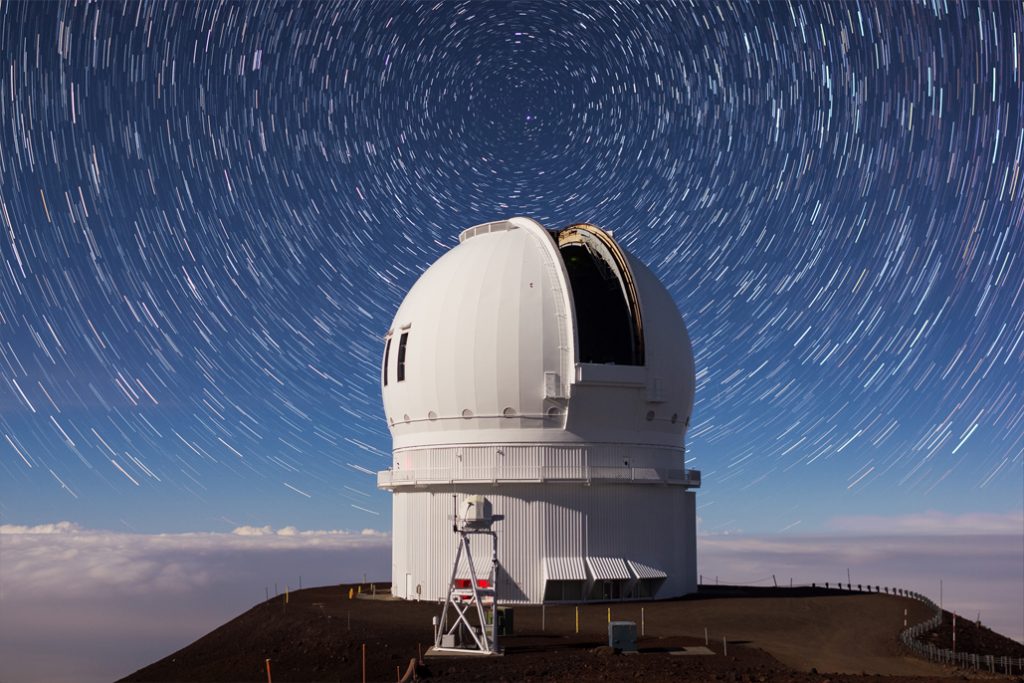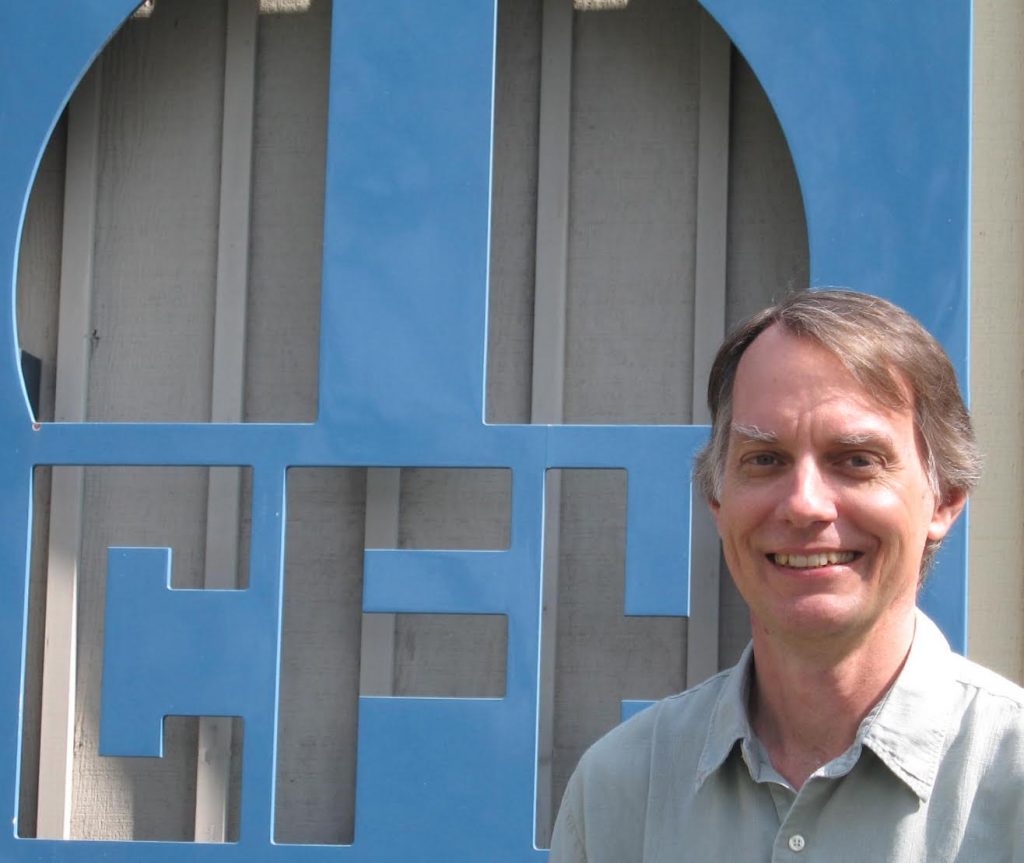Maunakea Skies: ‘Cracking the Code of Existence’
New knowledge streaming from Maunakea’s summit is an essential part of this epic quest to crack the code of existence itself through advanced mathematics, physics and astronomy.
Real progress is being made in the remarkable yet notoriously difficult task…
Learn more about “Cracking the Code of Existence: Universal Questions and Answers from Maunakea” at ‘Imiloa’s Maunakea Skies talk on Friday, Jan. 20, at 7 p.m. with Dr. Doug Simons, executive director of the Canada-France-Hawaii Telescope.
Dr. Simons will delve into “precision cosmology,” a term he describes would have earned a chuckle from fellow astronomers when used not long ago.
Cosmology studies the structure, evolution and origin of the entire universe, and requires observations of objects near the edge of the visible universe—making it increasingly difficult to make real progress.
For centuries, cosmology measurements have been notoriously incorrect, but times have changed. Measurements made over the past decade, including those using instruments on Maunakea, give real merit to the term “precision cosmology.”
Combined with advances in high-energy physics which can replicate conditions of the Big Bang, 21st-century cosmology is now yielding insights into some of the most perplexing questions we know how to ask, including “where did the universe come from?” or “how can you make something out of nothing?”
As we search for the answers to these questions, we are lead to utterly astonishing insights, as we are forced to come to grips with the phenomenally improbable nature of our universe.
Interwoven with the marvels of precision cosmology, Dr. Simons will also share perspectives about the conflict over Maunakea and the challenges between science and culture. This misperception is easily challenged by probing far deeper than terms like “sacred” or “science” allow. These polarizing comfort zones melt away when confronted by fundamental truths spawned not by people, but nature.
Hosted by Planetarium Technician Emily Peavy, ‘Imiloa’s monthly Maunakea Skies program includes observational highlights of the current night sky over Hawai‘i, with the audience able to view prominent constellations and stars visible during this time of year.
Maunakea Skies planetarium presentations are held on the third Friday of each month. General admission tickets are $10; $8 for members (member level discounts apply).
Pre-purchase tickets at ‘Imiloa’s front desk or by phone at 808-932-8901.
‘Imiloa is located at 600 ‘Imiloa Place in Hilo, off of Komohana and Nowelo Streets at the UH Hilo Science and Technology Park.
For more information, visit www.ImiloaHawaii.org.
The ‘Imiloa Astronomy Center of Hawai‘i is a world-class center for informal science education located on the University of Hawai‘i campus. Its centerpiece is a 12,000-square-foot exhibit hall, showcasing astronomy and Hawaiian culture as parallel journeys of human exploration guided by the light of the stars. The visitor experience is amplified with programming using ‘Imiloa’s 3D full dome planetarium and 9 acres of native landscape gardens. The center welcomes approximately 100,000 visitors each year, including 10,000-plus schoolchildren on guided field trips and other educational programs.

















